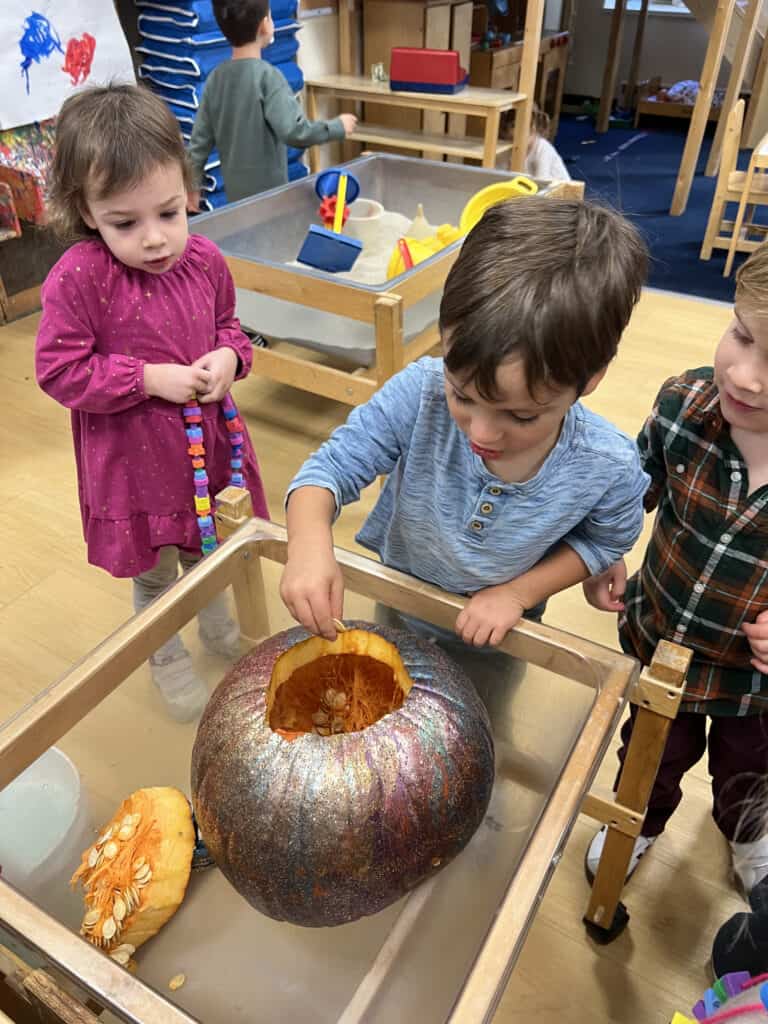Preschool is a crucial time for children to develop important skills that build a foundation for future academic success. During these early years, the skills they practice support their growth in multiple areas, including social, emotional, cognitive, and physical development. Engaging activities, play-based learning, and interactive experiences help foster these skills, preparing children for future educational success. To this end, in our preschool classrooms, learning often goes much deeper than it appears on the surface.

In our Threes classrooms, students regularly practice their beading skills. Stringing beads is a valuable activity for early childhood development for several reasons, which is why it occurs multiple times throughout the school year. This activity helps children refine their hand-eye coordination and fine motor skills as they manipulate the beads and thread them onto a string or lace. These skills are important precursors to tasks like writing, tying shoelaces, and using utensils.
Stringing beads also requires concentration and focus. Children select beads, plan their designs, and thread them onto the string, helping to improve their attention spans while encouraging persistence and problem-solving skills. Additionally, it allows children to express their creativity and individuality through their color choices, pattern creation, and design choices. This fosters imaginative thinking and encourages the exploration of different combinations and arrangements.
In one Threes classroom, students also engaged their senses in the “scientific” exploration of the insides of a pumpkin they affectionately named Peppers! They developed hypotheses about what might be inside Peppers and waited in anticipation as they carved the top and lifted the stem. After carving, Peppers was placed in the water table so that each child could smell the top of the pumpkin and dig through the seeds and stringy pulp if they chose to. They further engaged their senses to learn how the pumpkin felt and smelled. When students were asked, “What does it feel like?” they responded with descriptive words such as “slippery,” “cold,” and “squishy.”
They washed and dried the seeds, and each child had the opportunity to scoop soil (a new word learned) into planting pots with a spoon, count out seeds, and plant them. When asked what the seeds would need to grow, students replied with “water” and “sun!” Teachers agreed and added that the seeds would also need a lot of love. Each child sprayed their plant with water, planned to do this regularly, and placed the plants by a large window to receive sunlight.

Teachers roasted the remaining seeds and offered them to the students during snack time. Later that day, each child placed their name on a pumpkin chart under one of three categories: “I tried them and liked them,” “I tried them and did not like them,” or “I did not try them.”
These engaging hands-on experiences not only foster a deeper understanding of concepts but also bring a sense of joy and excitement to our preschool environment. Children are encouraged to explore, experiment, and express their creativity, allowing them to learn through play and purposeful activities. This method not only enhances their cognitive skills but also builds social connections and emotional well-being, making every learning moment a fun-filled adventure.
Text excerpted and photos from Threes Head Teacher Todd Loyd.
Click here to learn more about the Early Childhood Division at Rodeph Sholom School.
